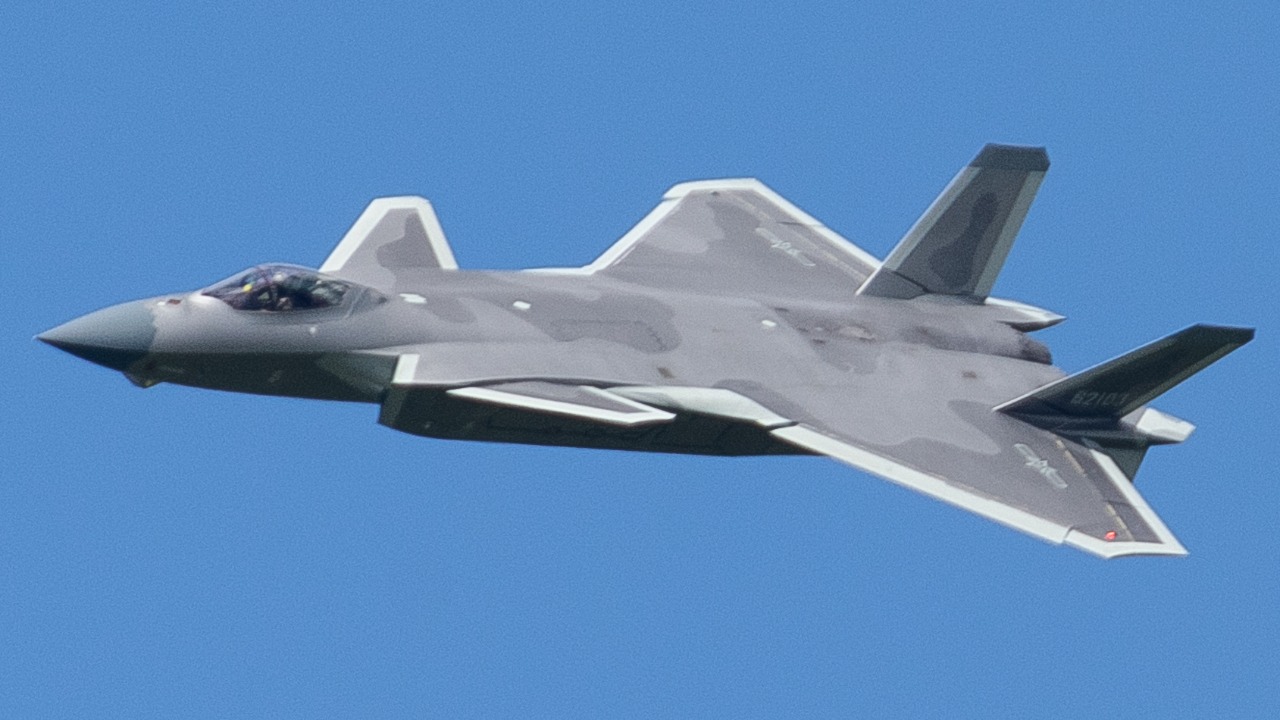
China’s J-20 Mighty Dragon stealth fighter, now in its upgraded J-20A variant, is increasingly being seen as a direct competitor to the U.S. F-22 Raptor in the race for aerial supremacy. The J-20’s recent advancements have positioned it as a formidable rival to both the F-22 and F-35, in terms of technological prowess. A recent encounter in which Chinese forces reportedly “chased away” an F-22 Raptor, followed by a Russian-origin Su-35 intercepting a P-8A Poseidon near Australia, has heightened regional tensions.
Origins and Development of the J-20 Mighty Dragon
The J-20 Mighty Dragon marked China’s entry into the realm of fifth-generation stealth fighters, playing a pivotal role in modernizing the People’s Liberation Army Air Force. The progression to the J-20A variant brought significant enhancements in engine performance and avionics, addressing some of the early limitations of the aircraft. A key milestone in the J-20’s development was the integration of indigenous WS-15 engines, enabling supercruise capability without the need for afterburners. source.
F-22 Raptor’s Design and Technological Edge
The F-22 Raptor, born out of the U.S. Advanced Tactical Fighter program, has been a symbol of air superiority since it entered service in 2005. Core features such as thrust-vectoring engines and sensor fusion provide the F-22 with significant advantages in beyond-visual-range engagements. However, production halts and fleet sustainment efforts have limited the total number of operational units to 187.
Stealth and Radar Evasion Comparison
The J-20 employs canard designs and radar-absorbent materials to reduce its radar cross-section, potentially matching but not exceeding the F-22’s all-aspect stealth. The F-22, on the other hand, boasts superior internal weapons bays and edge alignment for minimal infrared signature. The J-20’s longer fuselage aids in stealth but could introduce potential vulnerabilities in high-threat environments. source.
Armament and Sensor Suites
The J-20’s payload includes PL-15 long-range missiles and integrated electro-optical targeting systems, designed for network-centric warfare. This contrasts with the F-22’s AIM-120D AMRAAMs and advanced AN/APG-77 radar, which provide a first-look, first-kill advantage in combat scenarios. Differences in avionics, such as the J-20’s helmet-mounted displays versus the F-22’s pilot-vehicle interface, also play a crucial role in situational awareness. source.
Performance in Speed, Range, and Maneuverability
The J-20’s top speed exceeds Mach 2, and its combat radius surpasses 1,100 km, thanks to its delta-wing configuration. In contrast, the F-22 can supercruise at Mach 1.5 without afterburners and boasts superior turn rates due to 2D thrust vectoring. The J-20’s larger size allows for extended missions over the Asia-Pacific, although this comes with implications for fuel efficiency and endurance.
Recent Operational Encounters and Escalations
A recent incident saw Chinese J-20s “chasing away” an F-22 Raptor during a patrol, demonstrating China’s assertive approach to airspace enforcement. This was followed by a Russian-origin Su-35 intercepting a U.S. P-8A Poseidon near Australia, indicating a broader coalition targeting. These events underscore the need for clear rules of engagement in international airspace, including effective pilot communications and de-escalation protocols. source.
Strategic Implications for Air Superiority
With over 200 units in its fleet, the J-20 poses a significant challenge to U.S. numerical advantages in the Indo-Pacific. The potential for J-20 exports to allies such as Pakistan contrasts with the F-22’s export ban, further shifting the balance of power. Future upgrades, including AI integration for both fighters, could play a decisive role in potential conflicts in the Taiwan Strait. source.
More from MorningOverview